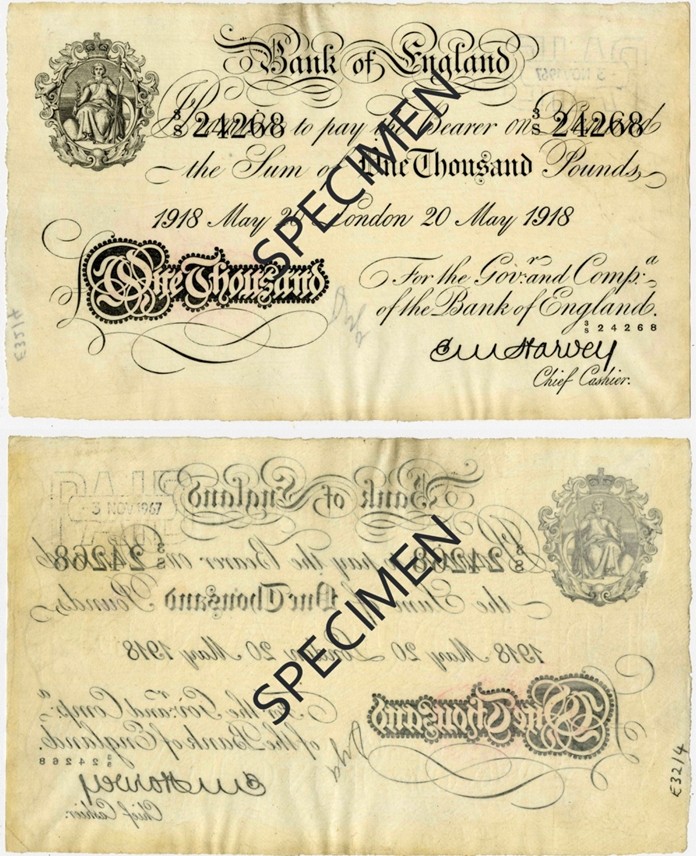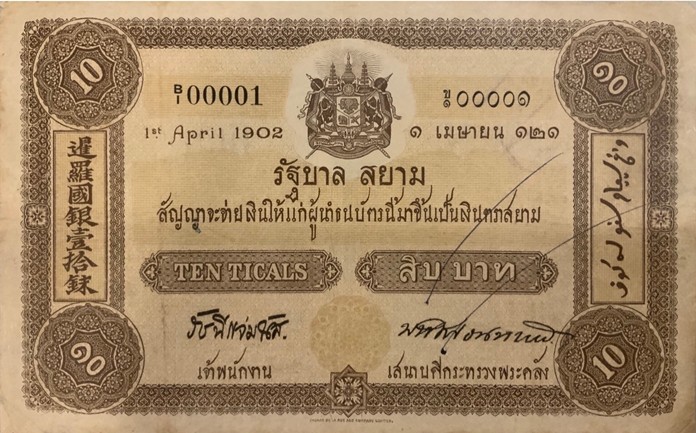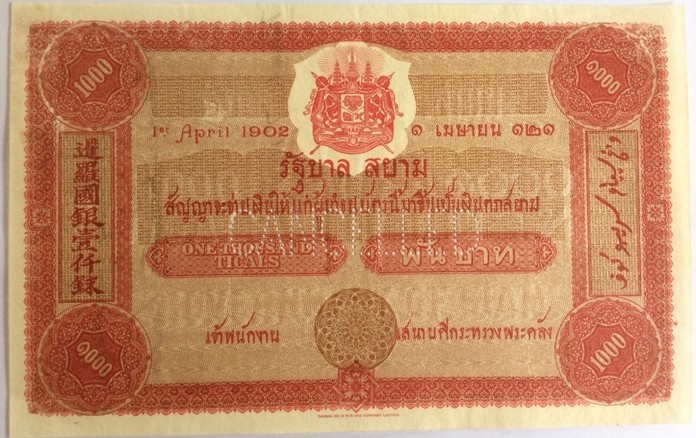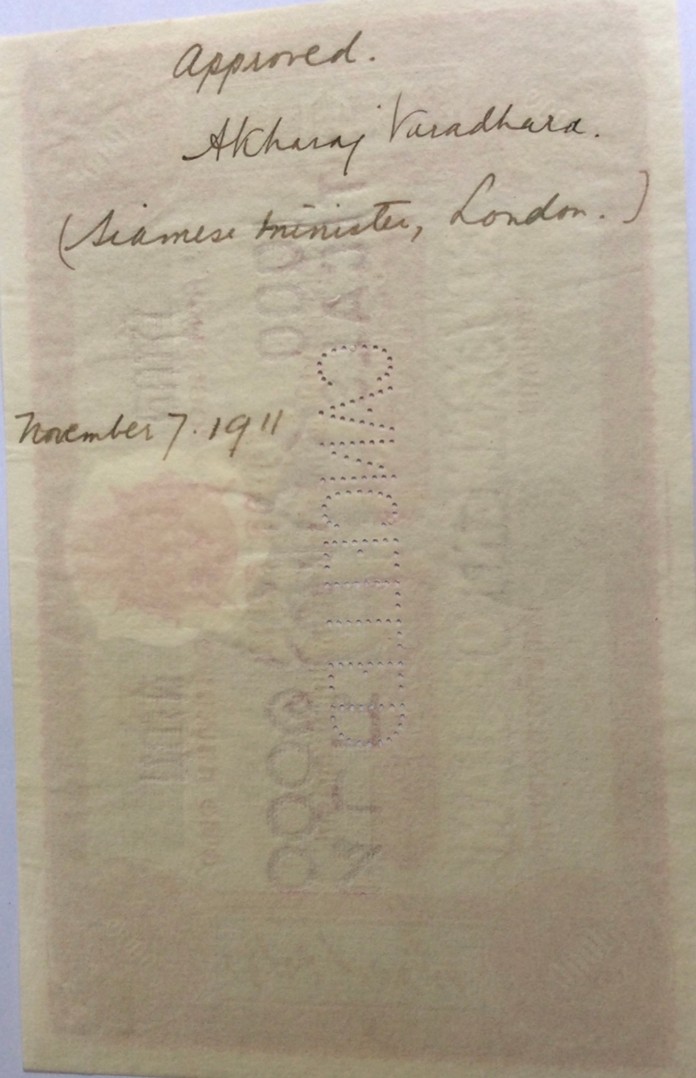 History records that the first paper banknotes were issued during the Chinese Tang and Song dynasties in the 7th century A.D.
History records that the first paper banknotes were issued during the Chinese Tang and Song dynasties in the 7th century A.D.
In 1661, Sweden was the first European country to issue banknotes. The Bank of England was established in 1694, and issued banknotes in 1695.
Jorgen Thor Mohlen, a wealthy merchant in Bergen, Norway, received permission from King Christian V of Denmark and Norway to issue the very first bank notes in Norway in 1695.
The notes were printed on one big piece of paper and about one third of the right side was ripped off. This part stayed with the issuer to prevent forgeries and could be matched when the notes were to be redeemed. This project was not a success as people who owned these notes used them to pay tax. Having collected a lot of tax, the King presented the notes to Thor Mohlen to get silver in exchange.
Unfortunately, during that period Thor Mohlen incurred heavy losses on colonial trade and the Great Fire of 1702 and could not pay. He was declared bankrupt.
Foreign banks operating in Thailand produced the first banknotes issued in Thailand. These were Hongkong & Shanghai Banking Corporation, the Chartered Bank of India, Australia & China and the Banque de l’Indochine.
In 1891 Thai banknotes were printed by Giesecke & Devrient Co. in Berlin, Germany. Unfortunately, the notes were not put in circulation. Navarat Laekhakula, author, economist and an expert on the history of Thai currency, explained in his book “Bia, Baht, Coin, Banknotes” that in 1893 (RE112), “a conflict arose between Thailand and France. The French government dispatched gunboats to confront Thai armed forces, causing Thailand to cede the territories on the left bank of the Mae Khong River (in Laos) to France. Thailand was also required to pay compensation of three million Francs in coin. The situation put a halt to the adoption of treasure notes.” The notes printed in Germany were destroyed. Only a small number were kept as samples and these are very popular and valuable among collectors.
On September 7, 1902 the first Thai banknotes, First Series, were put into circulation. The notes were produced by Thomas de la Rue & Company, Limited, London, and had the denominations of 5-, 10-, 20- 100- and 1,000 Baht. The other circulating denominations were coins.

For years the Bank of England had only printed one-sided banknotes. The last one-sided note was issued in 1957 and ceased to be legal tender in 1961. As the Thai notes were to be printed in England it was suggested to the Royal Thai Treasury department to have the First Series printed on one side only.
Loading…

The prefixes used for the First Series of Thai Banknotes were: 5 Baht-prefix A, 10 Baht-prefix B, 20 Baht-prefix C, 100 Baht-prefix D and 1000 Baht-prefix E in front of the serial number. This is the very first printed 10 Baht note with prefix B1 and the serial number 00001. Many collectors do appreciate the first printed banknotes and the last printed banknotes. Banknotes with a solid number are also very popular. In Thailand, the number 999999 is prized and in high demand.


Before a run of notes was to be printed, a specimen note had to be approved by the Royal Thai Treasury Department in Bangkok. In the early years this process was very time consuming, so the Minister (Ambassador) at the Thai Legation in London was assigned to the task H.E. the Minister could only approve notes already circulating, so new designs had to be sent to Bangkok for approval. On February 7, 1911, this 1,000 Baht note was signed as approved by H.E. Phya Akaraj Waradhara. The last banknote First Series was dated in 1923. The first notes in the Second Series, printed on both sides, was announced February 18, 1925.
 |
 |
 |





